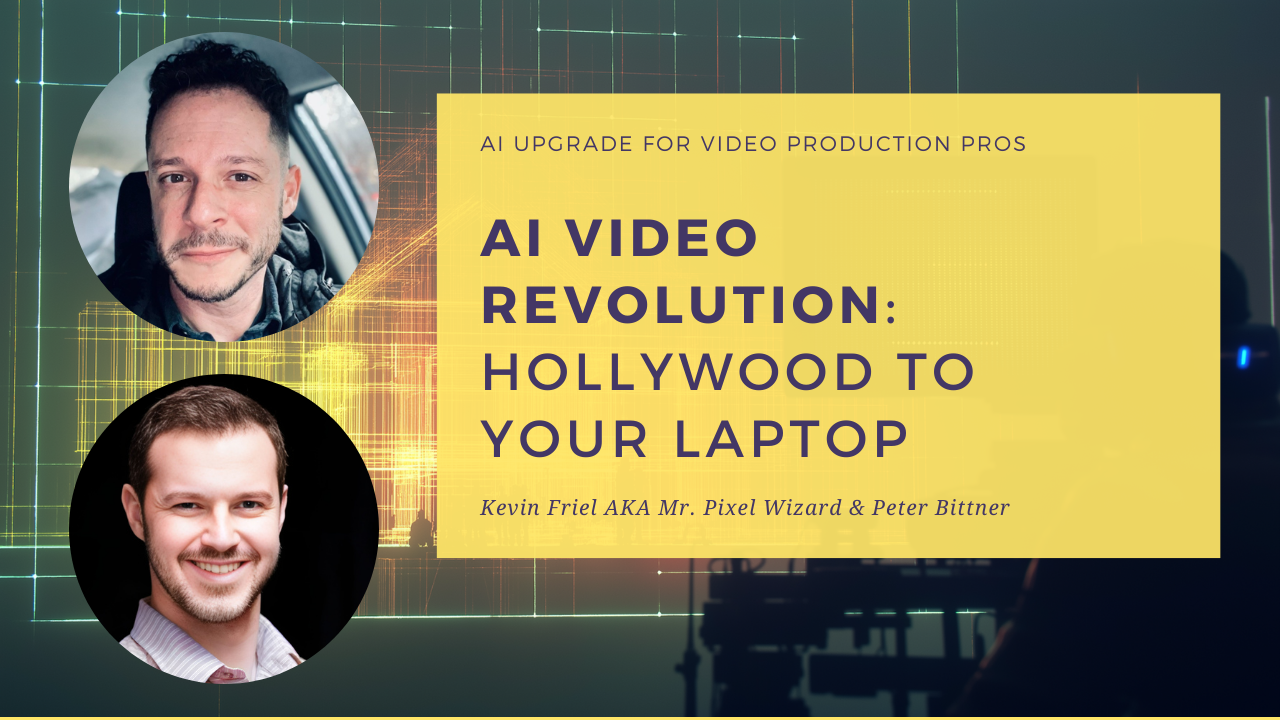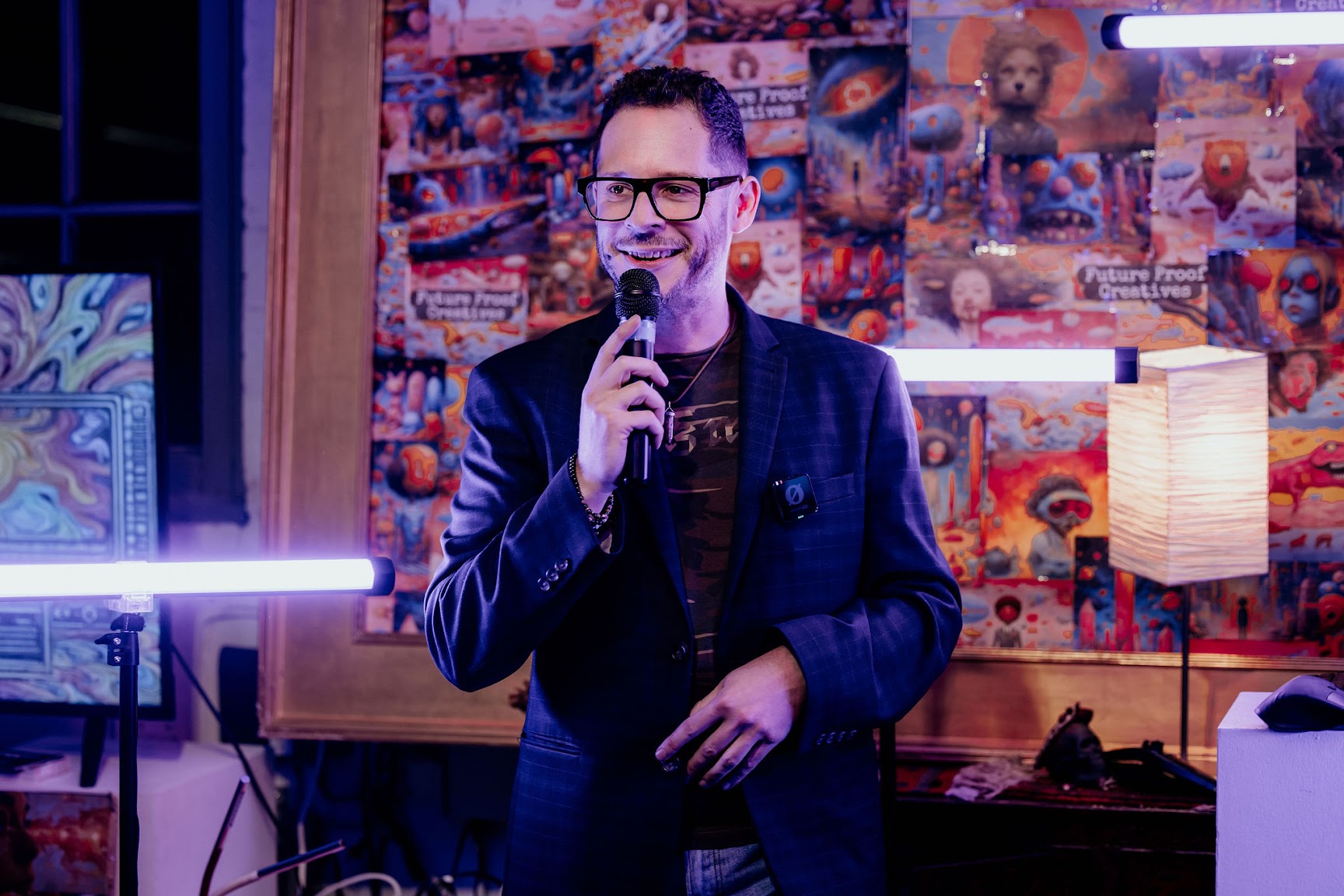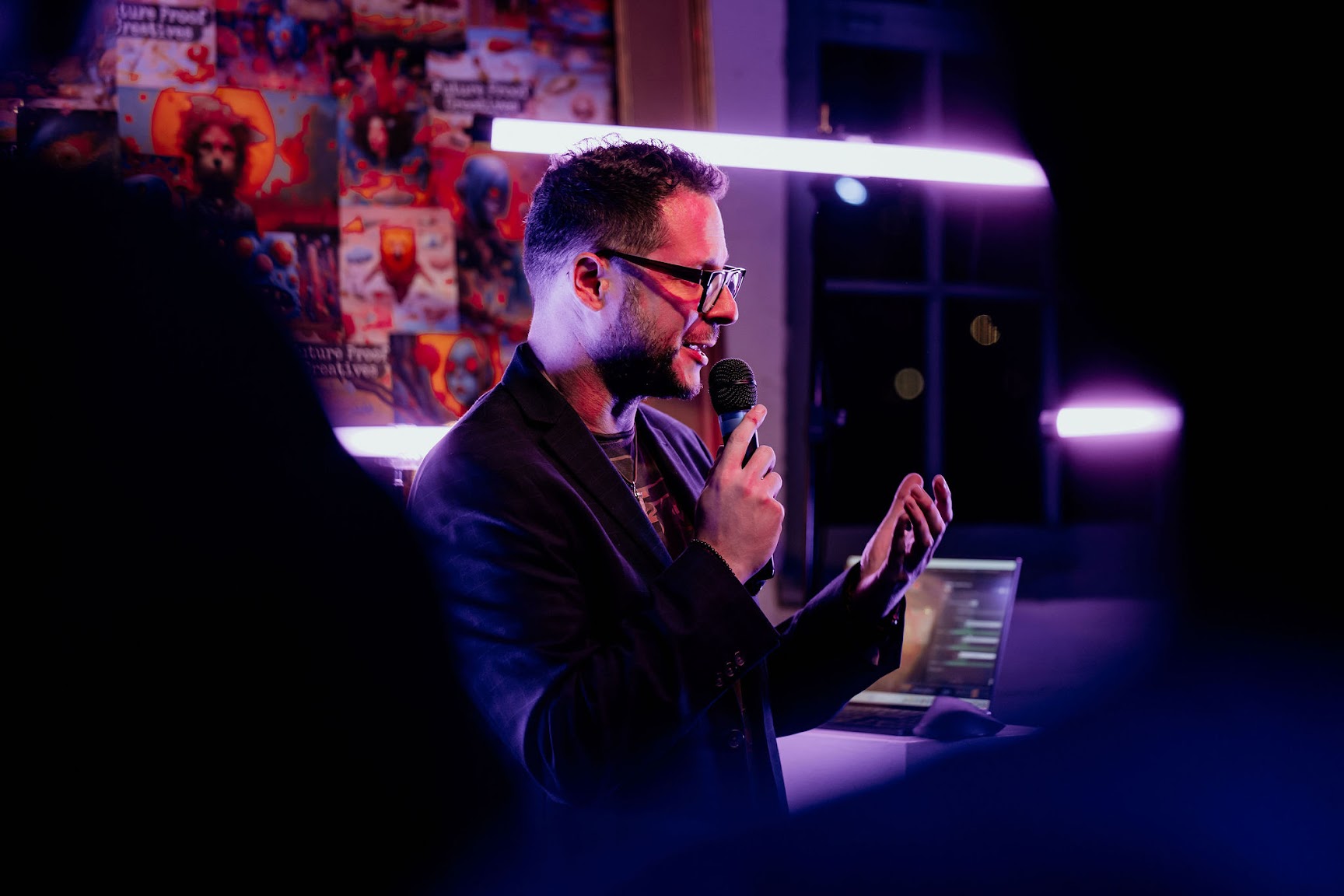How Hollywood VFX Veteran Kevin Friel Is Democratizing Blockbuster-Quality Video Production Through AI
Mar 10, 2025
The digital divide between multi-million-dollar Hollywood productions and indie passion projects is evaporating—pixel by pixel, frame by frame. The democratization agent? AI video tools wielded by pioneers like Kevin Friel, who's bringing blockbuster-caliber production capabilities to creators everywhere.
After 25 years navigating the evolution of digital storytelling—from Canadian broadcasting to Hollywood VFX for franchises like Dune and Detective Pikachu—Kevin's now hacking the matrix, combining bleeding-edge AI tools to create cinematic wizardry accessible to anyone with vision and grit.
At The Upgrade, we've convinced Kevin to share his "Franken-workflow" in our upcoming AI Video Production course. Before he blows minds in the virtual classroom, let's explore how this pixel wizard is reshaping the future of visual storytelling.
The Pixel Wizard's Journey
Kevin's career reads like a timeline of digital transformation itself. Starting in broadcast television 25 years ago, he cut his teeth filming Canadian senate hearings before founding his own production company, Symphonic Film Works. Over two decades, he grew from local political coverage to producing content for major brands like Google, MasterCard, and Nike.
The migration to Vancouver eight years ago marked his entry into the VFX industry's beating heart, where he contributed to global blockbusters at powerhouse studios like MPC and DNEG. Working on Dune, Detective Pikachu, Sonic the Hedgehog, and Bullet Train gave him insider access to the industry's most sophisticated workflows.
But the real transformation began when Kevin started experimenting with AI tools, bridging traditional VFX techniques with neural network-powered generation. It's in this hybrid territory—where human creativity meets algorithmic amplification—that Kevin believes the future of production lies.
"I've been in the trenches of tech transformation for decades," Kevin explains. "I've seen firsthand how technology can either amplify or stifle human potential." His mission now? Ensuring AI becomes the great creative equalizer, not just another tool for the privileged few.

AI's Transformation of Video Production
The revolution isn't coming—it's already reshaping how major studios produce content. Kevin cites two watershed examples from recent blockbusters:
For a Robert Zemeckis film featuring Tom Hanks, an AI system developed by a specialized VFX firm (later acquired by DNEG) provided real-time de-aging on set. This wasn't just for final output—it gave Hanks immediate visual feedback on his performance.
"Tom Hanks would test his movement and see his face," Kevin explains. "The discord between his face and his body would make him realize: 'Wait, I have to be straight up and cockier—way more egotistical—because that's what I was at 22!'"
This real-time AI feedback loop transformed Hanks' performance, tapping into muscle memory and behavioral patterns that might otherwise have remained dormant.
Similarly, for Alien: Romulus, AI brought back the actor who played the android in the original Alien film—despite the actor having passed away years ago. By training on both the film footage and unused takes, the system recreated not just his likeness but his voice and mannerisms.
Beyond these high-profile applications, Kevin highlights AI's "slot machine effect"—the accidental discoveries that spark creative directions no human would have conceived alone:
"One of the cool artifacts of using AI for visual storytelling is using that slot machine effect to your benefit—using the hallucinations it gives you for inspiration. I never would have come up with that composition or those objects that appeared that I didn't ask for, but they're really cool. I'm going to take those and run with them."
This collaborative relationship between creator and algorithm represents a new form of creative partnership, one that continually surprises and inspires.
"There's a real hunger for wildly different ways to tell stories outside of these five to ten different kinds of stories that have been commercially acceptable for so long," Kevin notes. AI might just be the tool that breaks storytelling out of formulas that have dominated for decades.
Kevin's Current AI Video Toolkit
The current state of AI video production requires what Kevin calls "electronic duct-taping"—combining multiple specialized tools to achieve professional results. His current workflow typically involves:
- Midjourney for initial image generation, often using custom prompt templates developed through GPT
- Magnific for upscaling and adding photorealistic details to generated images
- Runway Gen-3 Alpha for transforming still images into motion
- Runway's Act One for adding realistic dialogue and facial performances
- Clay (a Chinese visual AI engine) for alternative aesthetic approaches
- ComfyUI for more complex, customized generation when needed
One technique Kevin's particularly excited about is Runway's new "first frame stylization" feature, which allows creators to meticulously craft a single frame, then have the AI propagate that exact style across an entire video sequence.
"You can add a digital parrot on someone's shoulder as the first frame and tell Runway to animate it like the parrot from Aladdin," Kevin explains. "It nails it—even if the person is turning around and walking with a 360-degree gimbal shot underwater."
Despite the impressive results, Kevin emphasizes that the goal isn't replacing human creativity but amplifying it: "It's a workflow focused on getting as much human presence as possible to create emotional buy-in, even in fantastical worlds and character designs."
The Future of Storytelling with AI
Kevin sees AI dismantling traditional barriers that have kept many voices out of visual storytelling:
"The democratization of liberating these stories that never had access to budgets or industry connections—that's what excites me. There are so many traps inside Western, business-driven storytelling. We have 100,000 versions of the hero's journey."
As AI makes high-quality production accessible to creators outside the Hollywood system, Kevin anticipates a renaissance of narrative diversity. Stories previously deemed too niche or experimental for traditional funding models can now find their audience without million-dollar budgets.
This transformation isn't without tension. The visual effects industry currently sits in what Kevin calls "a staggering holding pattern" as studios and streamers recalibrate their business models in the face of technological disruption.
"My optimistic side says there's a lot to be gained. Instead of striving so hard just to get past the first threshold of pixel-perfect imagery, we can iterate on narrative scope and creative vision. The ballpark is set within a couple of hours, and then we can focus on making the story the best it can be."
The flip side, however, is the potential for economic displacement. "We have to be cognizant of the business climate where storytelling could get even more 'propertied' than ever. We have to be very careful of that opportunity."
The Upgrade's AI Video Experience with Kevin
Kevin's bringing his hybrid workflow knowledge to The Upgrade in a four-session intensive course designed to take participants from concept to completion of a 90-second polished video using AI-driven production techniques.
Unlike isolated YouTube tutorials that might introduce single tools without context, Kevin's approach integrates aesthetic considerations with technical execution. "What I'm really excited about for students taking this is the 50-cent tour of what I hoped I got in 25 years of story creation."
The course begins with establishing visual influences and mood boards before diving into the AI toolkit. "It's about taking your humanity, your burning passion of what you want to tell through visual medium, getting all those emotional pieces together, and then using the AI workflow."
The collaborative, real-time nature of the course allows for personalized guidance that adapts to each participant's vision. "What I love about this format is that it's truly collaborative in real-time. Over those two weeks and four sessions, I get to learn so much from different storytellers each time."
By the end of the course, participants will not only have a finished piece for their portfolio but a replicable workflow they can continue to refine and apply to future projects.
Staying Ahead in the AI Video Revolution
When asked how he keeps up with the breakneck pace of AI development, Kevin describes a two-tier approach:
First, he strategically curates his information intake—particularly on LinkedIn—to surface relevant innovations. "I've refined it to a two-tier process where I've kept up in shaping my algorithm to follow voices that are forward on seeing what's out there and trying them out on first pass."
This isn't passive consumption but active curation: "If you do not participate in your algorithm, you're just going to get the default blanket set. If you tailor it and say 'like this, like this, nope, nope, nope, yep, yep, yep,' the algorithm starts to really respond."
Second, he stays connected to real-world communities: "Being plugged in with real communities is really crucial. We're lucky to have very engaged AI, visual effects, and animation communities here in Vancouver."
Underlying both strategies is a process of continuous self-reflection: "It's a process of knowing yourself as well—really checking in with yourself and seeing how you feel about every piece of information, choosing whether to engage with it."
This balance of technical knowledge and emotional intelligence represents what Kevin believes will be the enduring human advantage in an AI-augmented creative landscape.
The Revolution Will Be Visualized
The tools currently reshaping Hollywood blockbusters are rapidly becoming accessible to independent creators everywhere. Kevin Friel stands at this intersection, translating high-end production techniques into accessible workflows that anyone with vision can leverage.
"What AI really gives us the opportunity to explore and broadcast is new voices, new ways to tell stories in ways that those of us in established rabbit holes never imagine trying."
The democratization of visual storytelling promises to diversify not just who can create compelling content, but what kinds of stories get told. As these tools continue evolving at lightning speed, communities like The Upgrade provide crucial spaces for knowledge-sharing and collaboration.
In Kevin's words: "Let's chart the future together—one that's powered by AI but grounded in our shared humanity."

AI Video Production with Kevin Friel
Course Details:
- Four sessions over two weeks
- Create a 90-second polished video using AI workflows
- Hands-on guidance from a Hollywood VFX veteran
- No coding experience required
What You'll Learn:
- Building effective visual mood boards
- Crafting AI-optimized prompts
- Integrating multiple AI tools into a cohesive workflow
- First frame stylization techniques
- Adding realistic character performances
- Finalizing your piece with professional polish
Recommended Software:
- Runway (free trial available)
- Midjourney (subscription required)
- Optional: ComfyUI (free, open-source)
Join the waitlist for our next cohort →

SUBSCRIBE FOR WEEKLY LIFE LESSONS
Lorem ipsum dolor sit amet, metus at rhoncus dapibus, habitasse vitae cubilia odio sed.
We hate SPAM. We will never sell your information, for any reason.

